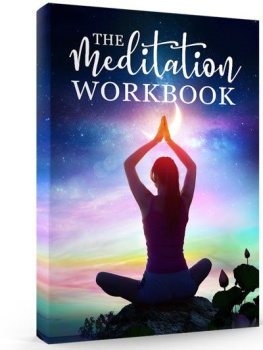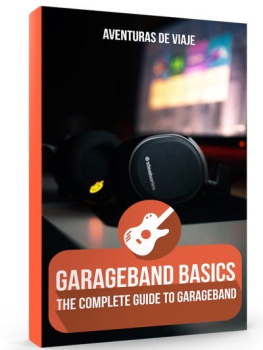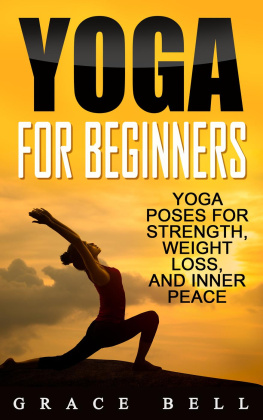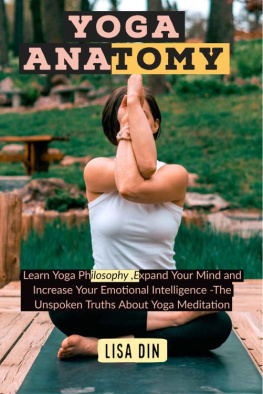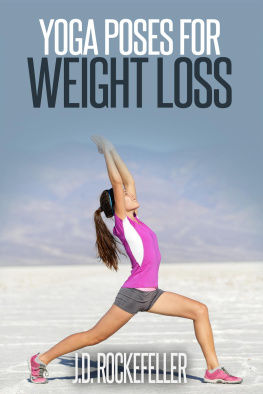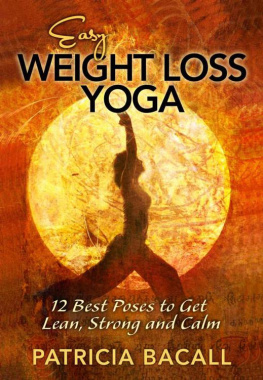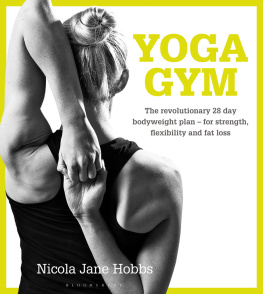Besides the chapters on breathing and Yoga Nidra, this book is split into two main sections.
This section contains instructions on how to do all the poses mentioned in the sequences. They are in alphabetical order for easy reference.
In the second section, you will find all the yoga sequences for weight loss. Each sequence has images and a list of poses that make up the sequence. The listed poses correlate to the images, with the first pose starting at the top left and the last finishing at the bottom right.
BREATHING
There are a few different types of breathing methods in yoga, but we only use two basic ones for all the routines in this book.
Three-Part Breath
This is the breath you will use most often when practicing yoga. Use it while doing the sequences in this book. When first learning it, you will probably want to do it from a sitting or lying position.
Breathe in long and deep through your nose. First, feel the breath enter your lower belly, then your lower chest/rib cage, and finally your lower throat/the top of your sternum. Feel the clear, positive energies of love and happiness come up from your toes to you head.
When youre ready, exhale fully through your nose, feeling the breath leave in the opposite order from the one it came infirst from your sternum, then your chest, and finally your belly. Release all tension and negative energies out of your body, from your head to your toes.
Continue to breathe in and out like this, smoothly and continuously.
When you first start to practice this type of breathing, it may help to put your hands on each of the three areasyour belly, chest, and sternumas you do it. You can also try just breathing into each area on its own.
Alternate-Nostril Breathing
Alternate-nostril breathing is a quick and easy way to calm your nervous system and raise your happiness. It also helps clear congestion.
Sit tall and comfortably.
Curl the middle and index fingers of your right hand down into your palm.
Press your right ring finger on your left nostril to close it and breathe in to the count of four.
Now use your thumb to close off your right nostril so both your nostrils are closed. Count to four.
Release your ring finger and breathe out through your left nostril to the count of four.
Repeat this same sequence, but now breathe in through your right nostril.
Continue this alternation for three to five minutes.
YOGA NIDRA
Yoga Nidra is a form of guided meditation which has many health benefits. You can guide yourself, but the easiest way to do it is to listen to a Yoga Nidra practice and do what the instructor says.
For best results, find a place that isnt too hot or too cold, where your body can be comfortable and you can practice undisturbed. Put on some soothing background music if you want.
It is best not to do Yoga Nidra in bed, because you will be more likely to fall asleep. A yoga mat on the floor is ideal.
Yoga Nidra is a conscious practice.
Lie in Corpse Pose
Corpse pose, a.k.a. Shavasana, is a yoga pose used at the end of almost every yoga practice. Going straight from your yoga practice to Yoga Nidra is ideal and is (in my opinion) most likely the intention of the ones who created it.
Yoga Nidra can also be done from a seated position if lying down is inappropriate.
Close your eyes.
Corpse pose is explained in detail in the Poses section of this book.
Notice Your Breath
Notice your breathing. Feel your lungs filling with air, and your stomach expanding, and then deflating. Imagine a light around your body expanding and contracting as you breathe in and out. Feel the energy coursing through your body.
Use Your Senses
Notice each of your senses individually.
What sounds do you hear? Near, far, inside, outside.
What smells can you smell? Take small sniffs, like a dog does.
Taste the air.
Feel your body supported on the floor. Which parts of your body are touching?
What can you see with your eyes closed? Does the light make shapes in your eyelids?
Repeat Your Mantra
Your mantra is a short sentence stating your intentions. Its kind of like an affirmation. It may be an overall statement of health, relaxation, etc., or may be a visualization of something you want to achieve. One I use often is My entire being is completely relaxed and at one with the universe. Whatever yours is, repeat it mentally three times. Try to feel how it would feel if the visualization was realized.
Scan Your Body
This is where you consciously relax each part of your body.
Mentally go through your body. Bring your attention to and relax each part. You can be very detailed about this, or just do large areas; it depends on how long you want to spend. I start from the top of my head and work my way down. Sometimes I even do my internal organs.
After you have relaxed smaller body parts, relax them as a whole. For example, after youve relaxed your shoulder, upper arm, bicep, elbow, forearm, hand, and fingers, relax your whole arm. At the end, relax your whole body as one.
Awaken the Body
The last step is to slowly deepen your breath and start to move your fingers and toes, then your hands and feet.
In your own time, stretch out your body out however feels right. Open your eyes when youre ready. When you are done stretching, gently hug your knees (wind-relieving pose). Fall to your right side and then gently sit up. Take a moment to reflect on the practice, and then go about your day.
Related Chapters:
Poses
Although all the poses used in this book are considered basic ones, you may find some of them challenging when youre first starting.
Adjust them to your comfort level and work your way up. Hold each pose to the point where you can feel a good stretch, but not pain.
You will probably notice your breath shorten if you try to force your body too much. When this happens, just back off a little and refocus on your breathing. If you do find yourself in a painful position, back out of it slowly to avoid injury.

